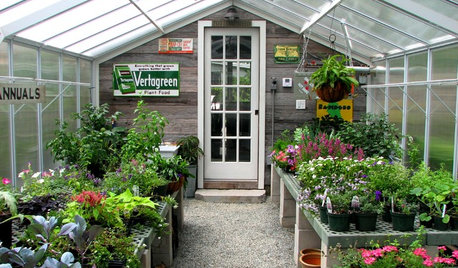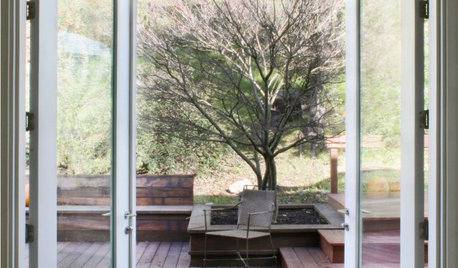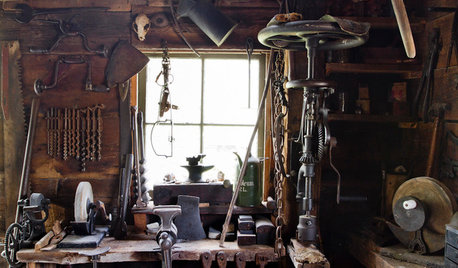Fireblight magnet antique apple varieties
Scott F Smith
11 years ago
Related Stories

OUTBUILDINGSRoom of the Day: An Old Shed Becomes a Spa and Greenhouse
A garden-loving couple create the perfect place to have a soak and putter with their plants year-round
Full Story
EDIBLE GARDENSHow to Grow 10 Favorite Fruit Trees at Home
Plant a mini orchard in fall, winter or early spring to enjoy fresh-off-the-tree fruit the following year
Full Story
MOST POPULARFind the Right Glass Door for Your Patio
It’s more than just a patio door — it’s an architectural design element. Here’s help for finding the right one for your home and lifestyle
Full Story
BEDROOMSHow to Choose the Perfect Bedsheets
Don't lose any shut-eye over scratchy or ill-fitting sheets; our mini guide to materials, thread count and fit will help you sleep tight
Full Story
MATERIALSAre You a Maker? Show Us Your Favorite Tool or Material
Houzz Call: A tool or material can be a maker’s best friend. We’d like to see your favorite — and what it helps you achieve
Full Story
12 Eye-Candy Appliances That Enchant With Color
Move over, stainless. These rainbow-colored confections are bringing a delicious, unexpected note to kitchens and laundry rooms
Full Story
COLORWake Up Your Woodwork With Black
Strike a dramatic note with black window frames, shelves, stairs and more, making features stand out or blend in
Full Story
KITCHEN DESIGNHow to Find the Right Range for Your Kitchen
Range style is mostly a matter of personal taste. This full course of possibilities can help you find the right appliance to match yours
Full Story
KITCHEN DESIGNWhat to Do if Your Kitchen Is Simply Too White for You
Does your all-white kitchen have you craving a little color? Here are some ways to introduce it
Full Story
GREAT HOME PROJECTSUpgrade Your House With New Interior Doors
New project for a new year: Enhance your home's architecture with new interior doors you'll love to live with every day
Full StoryMore Discussions






lucky_p
Scott F SmithOriginal Author
Related Professionals
Arlington Landscape Architects & Landscape Designers · Beachwood Landscape Architects & Landscape Designers · Cary Landscape Architects & Landscape Designers · Middle Island Landscape Architects & Landscape Designers · Anderson Landscape Contractors · Beachwood Landscape Contractors · Chesapeake Ranch Estates Landscape Contractors · Fort Mill Landscape Contractors · Hilton Head Island Landscape Contractors · Kailua Landscape Contractors · Mission Bend Landscape Contractors · New Berlin Landscape Contractors · Ponte Vedra Beach Landscape Contractors · Vashon Landscape Contractors · Yuba City Landscape Contractorsmegamav
planatus
Scott F SmithOriginal Author
megamav
megamav
Scott F SmithOriginal Author
NorthGa7A
Scott F SmithOriginal Author
NorthGa7A
Scott F SmithOriginal Author
bob_z6
lucky_p
Scott F SmithOriginal Author
spartan-apple
trianglejohn
HGFzone8
NorthGa7A
HGFzone8
Scott F SmithOriginal Author
Scott F SmithOriginal Author
alan haigh
Scott F SmithOriginal Author